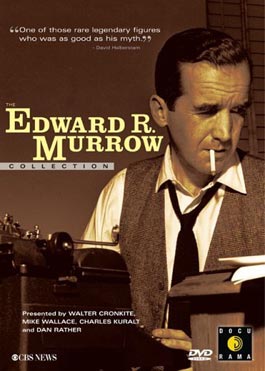
Any nostalgia that some network news junkies might feel for the glory days of Rather et al. fades after viewing this essential anthology, which effortlessly argues the radicalism of Edward R. Murrow as a voice of the people. Here’s a TV reporter who, unlike the flag-pin-wearing embedded correspondents of the Iraq war, lugged his “thousand-pound pencil” to Korea and used it to film a U.S. Marine saying that the war there was a “bunch of nonsense.
”The four discs—“This Reporter,” an anchor- studded biography; “The Best of ‘See It Now,’” Murrow’s early documentary series; “The McCarthy Years”; and the landmark migrantworker documentary “Harvest of Shame”—show a chronic perfectionist whose black-and- white broadcasts favored the representative “little picture.” Murrow may have been one of television’s first celebrities, but he was also something of a regular guy: His typical fare- well was “Good night, and good luck”—as if to suggest that the latter was something we needed in the 1950s. Representing common interests rather than corporate ones, Murrow advocated for the rights of the working poor and famously went up against—and took down—Red-baiting Senator Joseph McCarthy.
Such programs didn’t do much to halt the rise of quiz shows and sitcoms, and (his own increasingly frequent interviews with movie stars such as Marilyn Monroe and Marlon Brando aside) Murrow’s 1958 prediction that TV historians would find “evidence of decadence, escapism, and insulation from the realities in which we live” remains bone- chilling, the big-media equivalent of Eisenhower’s warning about the evils of the military-industrial complex. No wonder he would be out of the business just two years later.













